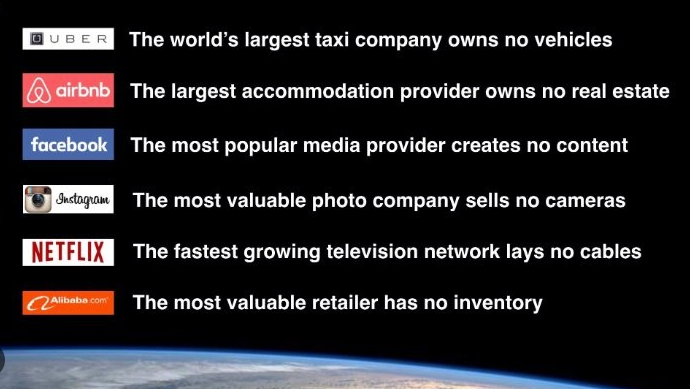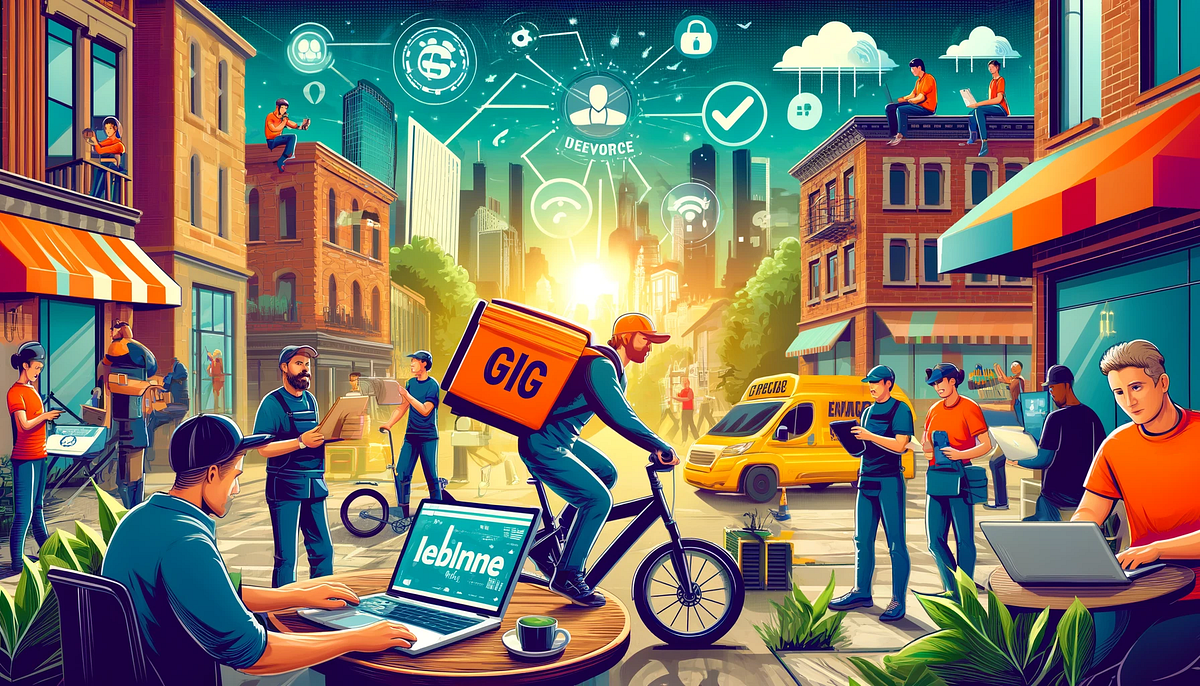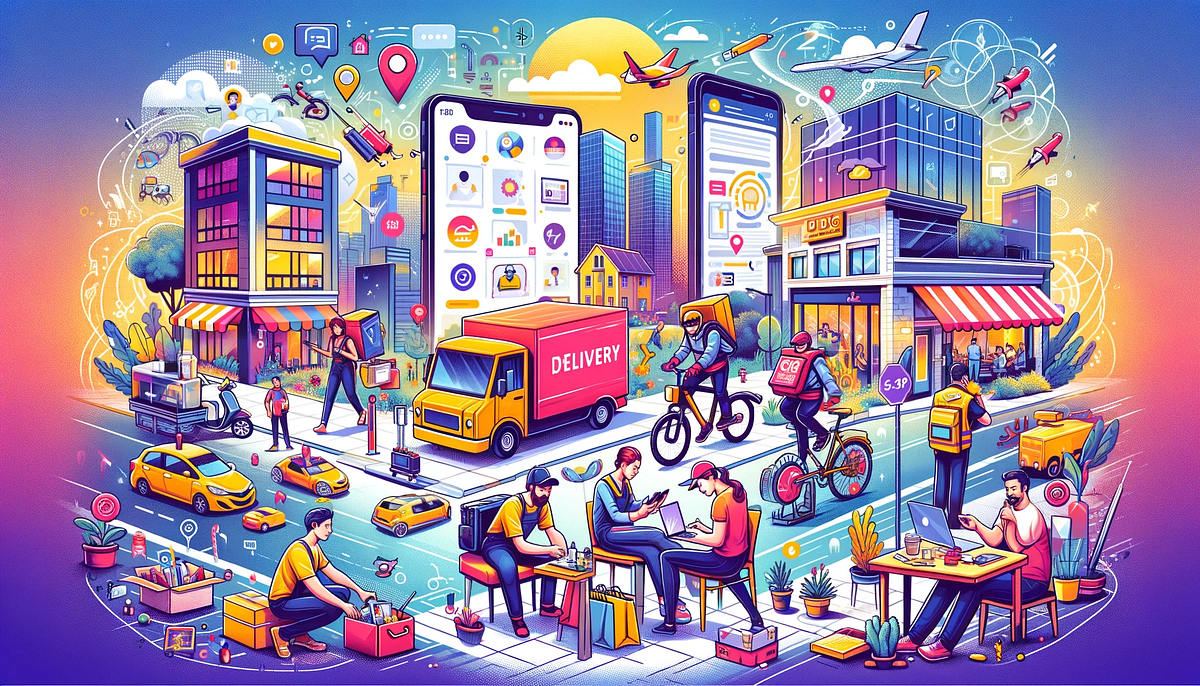Platform and Gig Economies and the Future of Workforce Training
Platform and Gig Economies and the Future of Workforce Training
Adapting to a New Economic Landscape: The Need for Specialised and Continuous Learning
The rise of the internet in the 90s understandably saw business models twist and shift, with new models centred around platforms and “gig marketplaces” taking the world by storm.

But with these innovative new business models come flexible and distributed workforces that power them, adding new complexities to the traditional business goals of maintaining high service quality and customer experience.
Traditional in-person training methods are no longer sufficient; modern, adaptable training solutions are needed to effectively reach and equip this dynamic workforce.
Understanding Platform and Gig Economies
Platforms Connect Suppliers & Consumers Efficiently
The platform economy uses digital platforms to facilitate direct, efficient, and transparent exchanges between users, eliminating the “middle man.”
The platform economy uses digital platforms to facilitate direct, efficient, and transparent exchanges between users, eliminating the “middle man.”
The Rise of the Gig Economy
The gig economy encompasses freelance or short-term jobs, such as driving for Uber, freelance writing, or project-based consulting — enabled by platforms that connect workers with consumers.
Platforms play a crucial role in enabling the gig economy by providing the infrastructure that connects gig workers with consumers. For example, Uber’s platform allows drivers (gig workers) connect with passengers easily, handle payments, and receive feedback. Similarly, platforms like Upwork and Fiverr connect freelancers with clients seeking specific skills and services.
The interdependence of these two economies is evident: the platform economy provides the necessary tools and systems that make gig work feasible, while the gig economy relies on these platforms to find consistent work and manage transactions effectively.

The Challenge of Distributed and Independent Workforces
A significant aspect of these economies is that workers are often independent contractors, not direct employees of the platforms they work through.
This brings several challenges:
- Geographical Distribution — workers are spread across different regions and even countries, making it difficult to standardise processes and ensure consistent quality across the board.
- Lack of Direct Oversight — as independent contractors, “partner workers” have more autonomy, which can lead to variations in how services are delivered. This adds to the difficulty in maintaining uniform standards of quality and service.
- Updating and Distributing Training — in rapidly changing markets, it is a constant challenge to respond uniformly and train distributed workforces on updated work processes, Standard Operating Procedures (SOPs), Key Performance Indicators (KPIs), and other critical information.
- Communication — Maintaining effective communication and coordination with a dispersed workforce can be difficult, leading to potential misunderstandings and inefficiencies.
- Engagement and Motivation — Keeping independent contractors motivated and engaged without the traditional benefits and career progression opportunities can be challenging.
- Data Security and Privacy — Managing sensitive information across a broad network of contractors raises concerns about data security and privacy.

Transforming Workforce Training — 10 Key Approaches for the Modern Economy
As you’d imagine, these challenges have significant implications for workforce training — but what does this mean practically?
1. Adopting Flexible Learning Platforms
Leveraging cloud-based learning experience systems (LXPs) that offer asynchronous training modules allows workers to learn at their own pace and on their own schedule, accommodating different time zones and availability.
2. Implementing Continuous and Just-in-Time Learning
Regularly updating training content and offering continuous learning opportunities ensures that workers stay up-to-date with the latest industry practices, tools, and standards. Microlearning modules can be particularly effective for delivering bite-sized, relevant content.
3. Enhancing Digital Communication Tools
Utilising advanced communication platforms that support video conferencing, instant messaging, and collaborative tools can help maintain consistent and clear communication across distributed teams. This can minimise misunderstandings and keep everyone aligned.
4. Standardising Training While Considering Local Nuances
Developing standardised training materials and protocols (including SOPs & KPSs) while keeping the local environment and individual needs in mind ensures consistency in service quality and processes.
Tailoring training to reflect local cultural contexts, regional regulations, and market conditions is essential. This includes translating materials into multiple languages and ensuring they are accessible and relevant to workers in different regions, thereby enhancing the effectiveness of the training.
5. Creating Personalised Learning Paths
Leveraging data analytics to create personalised learning paths based on individual worker’s skills, performance, and career goals ensures training is relevant and targeted. This personalised approach helps address specific learning needs and enhances overall productivity.
6. Fostering a Supportive Community
Creating online communities and support networks for independent contractors can help reduce feelings of isolation and provide a platform for peer-to-peer learning and support. Regular virtual meetups and forums can foster a sense of belonging and collaboration.
7. Utilising Technology and Gamification
Utilising technology like AI and Large Language Models, mobile apps, virtual reality (VR), and gamification enhances engagement and retention. Interactive and gamified training can make learning more engaging and effective, helping workers absorb and apply new knowledge.
9. Providing Continuous Feedback and Performance Monitoring
Continuous feedback loops and performance monitoring through digital platforms are crucial. Immediate feedback helps workers identify areas for improvement and adjust their performance in real time, fostering a culture of continuous improvement.
10. Encouraging Community and Peer Learning
Encouraging community and peer learning through online forums, social learning platforms, and collaborative tools fosters community and allows workers to learn from each other’s experiences. This communal learning approach can significantly enhance skill development and morale.
Conclusion
As the platform and gig economies continue to evolve, the need for specialised and continuous workforce training becomes more critical. The challenges of geographically dispersed, independent contractors can be met with innovative training solutions that prioritise flexibility, personalisation, and engagement. By leveraging technology, fostering community learning, and ensuring compliance, organisations can empower their gig workers to deliver high-quality services consistently. Embracing these strategies not only enhances the skills and productivity of the workforce but also strengthens the overall quality and reliability of services offered through these modern economic models.
Frequently Asked Questions (FAQs)
Q1: What are some examples of successful implementations of the suggested training approaches in real-world gig or platform economy companies?
Hohm Energy, a South African Renewable Energy Marketplace, uses the Beeline Knowledge Platform to facilitate rooftop solar installations. Their platform supports continuous learning and personalised training for solar installers, leveraging technology to streamline design, procurement, and project management. This approach helps maintain high service quality and efficiency across their distributed workforce.
Q2: How can independent contractors ensure data security and privacy when using platform-provided training tools and systems?
Independent contractors can ensure data security by using strong, unique passwords, enabling two-factor authentication, and keeping software updated. Platforms enhance security with encrypted communication, regular audits, and user education on cyber threats.
Q3: What specific metrics or KPIs should be used to measure the effectiveness of the training programs in the platform and gig economies?
Effectiveness can be measured by completion rates of training modules, knowledge retention via Spaced Repetition, user engagement levels, improvement in performance metrics, customer feedback and satisfaction scores, and regular surveys and feedback from the workers.
If this post and the future of work & workplace training sparks your interest, consider this an invitation to collaborate with us at Beeline. We’re at the forefront of this educational evolution and eager to guide others through it. Let’s navigate this innovative landscape together and unlock the full potential of people through your learning & training programs.

If you like my writing, subscribe to my list to receive occasional emails about whatever I am digging into and feel will be valuable to you creatively 😊
